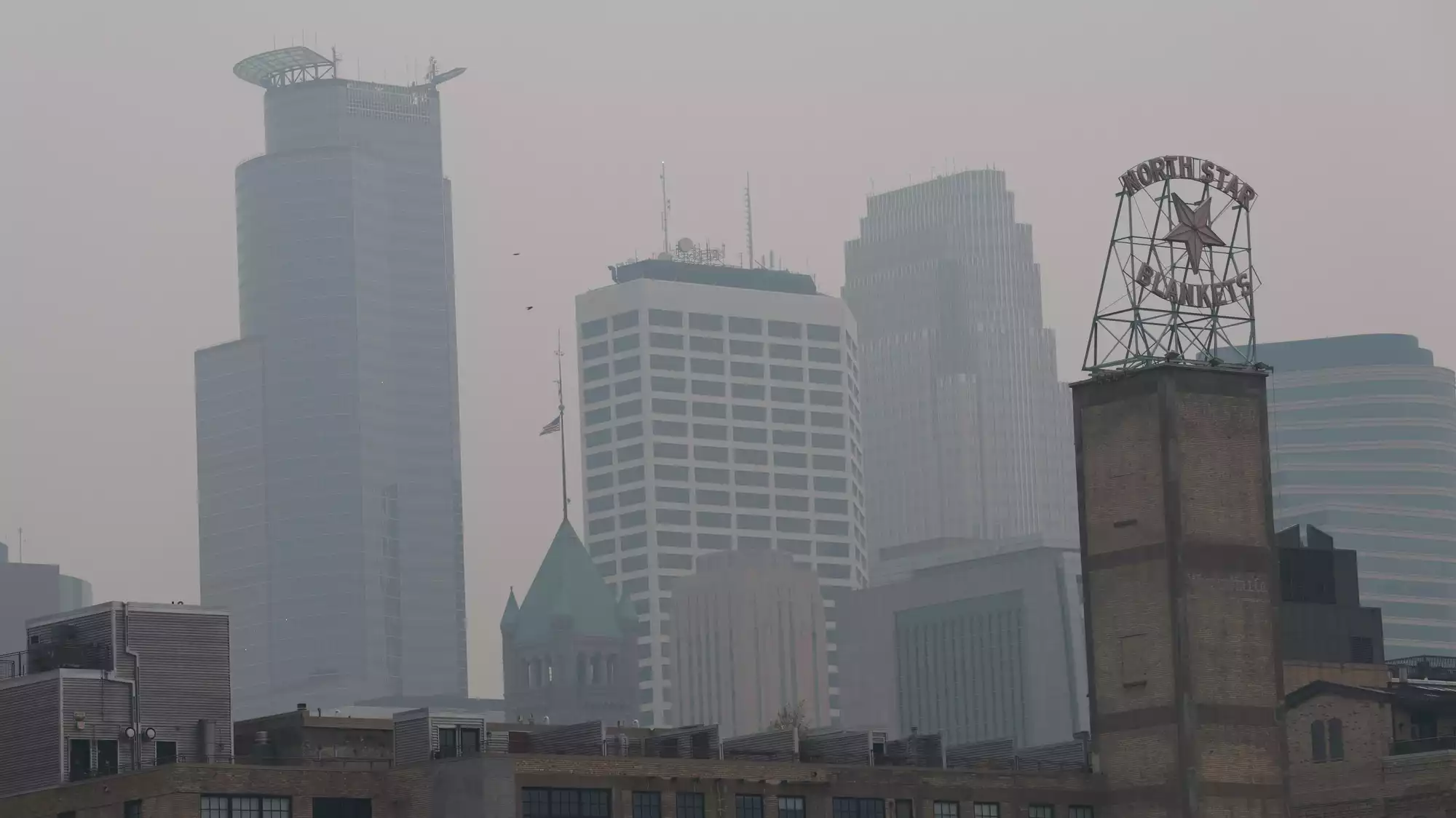
The American Lung Association’s State of the Air Report

The American Lung Association released its 25th annual State of the Air report Wednesday, highlighting the air quality in the Twin Cities metro area. The report shows that there has been a slight improvement in air quality between 2020 and 2022.
Health-based Air Quality Standards
The Clean Air Act mandates the Environmental Protection Agency (EPA) to establish health-based air quality standards for common pollutants. The lung association’s report focuses on fine particulate matter and ozone levels, which can have adverse health effects, particularly on people of color and those with underlying health conditions.
Improvements in Ozone Levels
Between 2020 and 2022, there has been some improvement in ozone levels. However, particulate pollution, such as tailpipe exhaust and wildfire smoke, has remained steady during this period. It is important to note that data from last summer’s wildfires and record numbers of air quality reports are not included in the report.
The Impact of Climate Change
According to Pat McKone, director of advocacy for the American Lung Association in Minnesota, climate change is contributing to the increased prevalence of air pollution and making it more challenging to address. McKone emphasizes the importance of considering climate change in our behaviors and advocating for its significance to decision-makers.
Actions for Positive Change
McKone states that achieving positive change requires a combination of individual choices, stricter federal regulations on major polluters (such as coal and gas-fired power plants), and the establishment of clean energy standards by states. In line with this, Governor Tim Walz signed a bill last year, mandating Minnesota to transition to 100 percent clean energy by 2040.
Nationwide Findings
The report also highlights the nationwide trend of increasing hazardous air quality. Nearly 40 percent of the U.S. population resides in areas with unhealthy levels of air pollution.
MPR News is your trusted resource for the news you need. With your support, MPR News brings accessible, courageous journalism and authentic conversation to everyone – free of paywalls and barriers. Your gift makes a difference.
SDGs, Targets, and Indicators
| SDGs | Targets | Indicators |
|---|---|---|
| SDG 3: Good Health and Well-being | 3.9: By 2030, substantially reduce the number of deaths and illnesses from hazardous chemicals and air, water, and soil pollution and contamination | – Fine particulate matter levels – Ozone levels |
| SDG 7: Affordable and Clean Energy | 7.2: By 2030, increase substantially the share of renewable energy in the global energy mix | – Transition to clean energy sources |
| SDG 13: Climate Action | 13.2: Integrate climate change measures into national policies, strategies, and planning | – Adoption of clean energy standards – Reduction of air pollution from major polluters |
| SDG 15: Life on Land | 15.1: By 2020, ensure the conservation, restoration, and sustainable use of terrestrial and inland freshwater ecosystems and their services, in particular forests, wetlands, mountains, and drylands, in line with obligations under international agreements | – Reduction of air pollution from wildfires |
1. Which SDGs are addressed or connected to the issues highlighted in the article?
SDG 3: Good Health and Well-being
The article discusses the impact of air pollution on health, particularly on people of color and those with underlying health conditions. It highlights the importance of improving air quality to reduce adverse health effects.
SDG 7: Affordable and Clean Energy
The article mentions the need for states to set clean energy standards and shift to 100 percent clean energy by 2040. It emphasizes the importance of transitioning to renewable energy sources.
SDG 13: Climate Action
The article mentions that climate change is making air pollution more common and harder to clean up. It calls for stricter federal regulation of major polluters and the adoption of clean energy standards to address this issue.
SDG 15: Life on Land
The article briefly mentions that particulate pollution from wildfires remained steady in the period analyzed. This connects to SDG 15, which aims to ensure the conservation, restoration, and sustainable use of terrestrial ecosystems.
2. What specific targets under those SDGs can be identified based on the article’s content?
Target 3.9: By 2030, substantially reduce the number of deaths and illnesses from hazardous chemicals and air, water, and soil pollution and contamination
The article highlights the importance of improving air quality to reduce adverse health effects caused by fine particulate matter and ozone levels.
Target 7.2: By 2030, increase substantially the share of renewable energy in the global energy mix
The article emphasizes the need for states to set clean energy standards and transition to 100 percent clean energy by 2040.
Target 13.2: Integrate climate change measures into national policies, strategies, and planning
The article calls for stricter federal regulation of major polluters and the adoption of clean energy standards to address air pollution and climate change.
Target 15.1: By 2020, ensure the conservation, restoration, and sustainable use of terrestrial and inland freshwater ecosystems and their services
The article briefly mentions the impact of particulate pollution from wildfires, highlighting the need for measures to reduce air pollution from such sources.
3. Are there any indicators mentioned or implied in the article that can be used to measure progress towards the identified targets?
The article mentions specific indicators that can be used to measure progress towards the identified targets:
- Fine particulate matter levels
- Ozone levels
- Transition to clean energy sources
- Reduction of air pollution from major polluters
- Reduction of air pollution from wildfires
These indicators can be monitored and analyzed to assess the progress made in improving air quality, transitioning to clean energy sources, and reducing air pollution from various sources.
SDGs, Targets, and Indicators
| SDGs | Targets | Indicators |
|---|---|---|
| SDG 3: Good Health and Well-being | 3.9: By 2030, substantially reduce the number of deaths and illnesses from hazardous chemicals and air, water, and soil pollution and contamination | – Fine particulate matter levels – Ozone levels |
| SDG 7: Affordable and Clean Energy | 7.2: By 2030, increase substantially the share of renewable energy in the global energy mix | – Transition to clean energy sources |
| SDG 13: Climate Action | 13.2: Integrate climate change measures into national policies, strategies, and planning | – Adoption of clean energy standards – Reduction of air pollution from major polluters |
| SDG 15: Life on Land | 15.1: By 2020, ensure the conservation, restoration, and sustainable use of terrestrial and inland freshwater ecosystems and their services, in particular forests, wetlands, mountains, and drylands, in line with obligations under international agreements | – Reduction of air pollution from wildfires |
Behold! This splendid article springs forth from the wellspring of knowledge, shaped by a wondrous proprietary AI technology that delved into a vast ocean of data, illuminating the path towards the Sustainable Development Goals. Remember that all rights are reserved by SDG Investors LLC, empowering us to champion progress together.
Source: mprnews.org

Join us, as fellow seekers of change, on a transformative journey at https://sdgtalks.ai/welcome, where you can become a member and actively contribute to shaping a brighter future.






